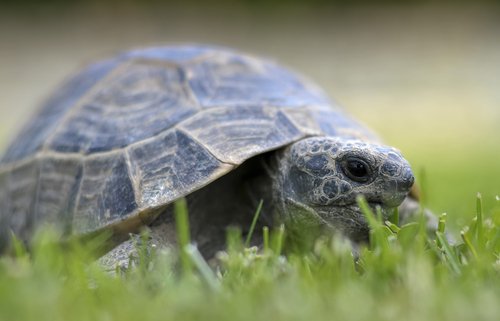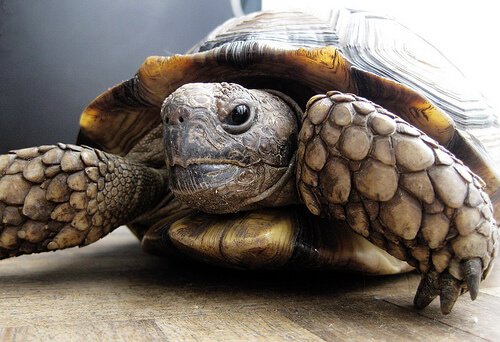Raising and Taking Care of Turtles


Written and verified by the lawyer Francisco María García
Taking care of your turtle is important to make sure that it’s healthy including everyone around it. Knowing how to take care of a pet means understanding its body and fulfilling his specific needs.
Turtles are the reptiles best suited for living with humans and are well-known for their long life expectancy. They are an excellent option for a child’s first pet because they often teach them a lot about the responsibility to take care of them and have respect towards the animal.
They adapt easily to small spaces and don’t require much attention from their owners. They are independent, quiet and don’t pose any threats to the household. However, they also need attention to develop healthily. The following are some of the things you must do in order to take care of turtles.
What main things you must do to take care of turtles?
Domestic turtles are divided into two large groups: aquatic and terrestrial. Each one has their specific needs in order to stay healthy.
Building the perfect “home”
A domestic aquatic turtle lives inside a fish tank, which is its home and that’s why it is so important to take into consideration when selecting one.

Turtles need space to swim and move freely. Therefore, the size of the fish tank (or terrarium) should be 4 or 5 times bigger than the animal.
Aquatic turtles grow a lot when they become adults. That’s why it’s a good idea to get a larger fish tank clear from the beginning in order avoid unnecessary expenses. The larger the tank, the better quality of life your turtle will have.
Basically, the fish tank must have 2 environments: a swimming pool (the “wet area”) where the turtle can swim and a dry area above the water where he can sunbathe, dry up and sleep.
Turtles hydrate themselves, breathe and feed underwater. Therefore, to guarantee that he remains healthy, it is necessary to give him clean and fresh water. Ideally, the fish tank will have a filtering system and weekly cleaning of its interior (including changing the water) is a must.
Many specialists claim that it is necessary to recreate the turtle’s natural habitat in order to improve his quality of life. You can do this by putting in artificial plants or palms, castles or other elements of a marine environment.
Environment and temperature
Strategically thinking about the tank’s location is just as important as buying it. The environment must be ventilated and receive sunlight or direct lighting. They need warm environments to develop properly. The ideal water temperature varies between 26º and 30ºC.
Tortoises need less management for their environment. Many people let them loose in the house. It is a riskier decision, but not a bad idea.
However, the best way to be safe is to buy a terrarium for a domestic tortoise. The rule of thumb for the tortoise’s size is the same as turtle itself. The space must be 4 to 5 times larger than the animal. They also need a warm environment with sunlight or artificial lighting.
Balanced feeding
Food is the most important aspect of turtle care. Their daily diet must provide the nutrients necessary for their species to develop healthily.
Reptiles usually need a less water than mammals in order to keep their bodies healthy. Turtles already get hydrated through their habitat. As for land-based tortoises, it is important to frequently provide fresh clean water.
The two types of turtles have different diets. While terrestrial tortoises are predominantly vegetarian, the water turtle must eat protein and animal fat.
There are commercial foods for aquatic and terrestrial turtles. This is the most practical way to ensure your pet has the proper diet. However, you can serve your turtle natural homemade food instead. It is best to ask a veterinarian about your turtle’s diets before you start making food for him.

What can they eat?
When it comes to an aquatic turtle, it is best to mix commercial food with small amounts of raw low fat fish, small crustaceans, certain vegetables, larvae, crickets and small insects.
You should give a terrestrial tortoise plenty of vegetables, fruits (except citrus), flowers, herbs, small pieces of raw meat and earthworms. They need a high level of calcium and phosphorus to keep their shells strong, which is their main protection against external threats.
The amount of food depends on the animal’s size and age. A small young turtle should be fed only once a day and a large older turtle can eat up to 3 to 4 times a day.
Aquatic and terrestrial turtles can have symptoms such as skin and shell lesions, eye infections and digestive problems. That is why you should get periodic checkups by the veterinarian to learn more about taking care of your turtle.
Source of the main image: neusitas
This text is provided for informational purposes only and does not replace consultation with a professional. If in doubt, consult your specialist.